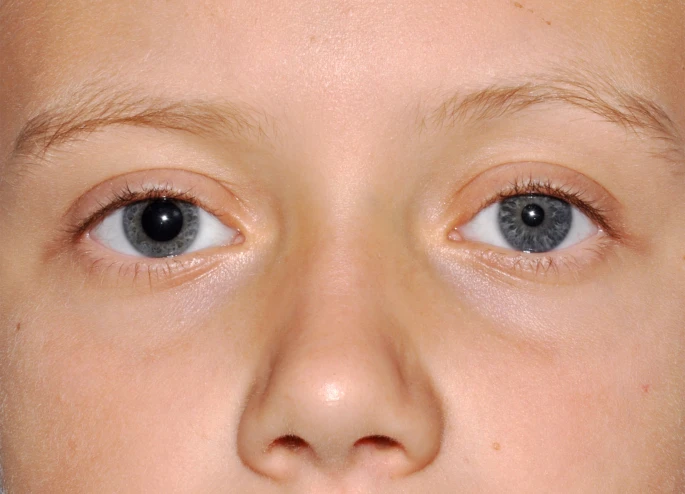Medically, unequal pupil sizes are termed anisocoria. The phenomenon behind it is a disturbance in the efferent pathway dynamics. The most common cause of anisocoria is benign physiologic anisocoria which affects up to 20% of the population. However, some life-threatening emergencies can also cause anisocoria.
Anisocoria is unlikely to cause complications itself however the underlying conditions can cause complications.
Case presentation
A 12-year-old boy came to the emergency with a complaint of blurred vision for 2 hours. The nurse and his mother noticed an asymmetry of pupils along with a dilated right pupil. It is defined as a case of acute anisocoria.
On further evaluation, the boy had no history of trauma, topical or systemic drug use, or ophthalmologic diseases. Also, his past medical history was non-significant. العاب وجوائز مالية حقيقية The boy also stated that his eyes were normal during the early morning. Moreover, he spent his morning playing in his grandmother’s garden.
Examination and Investigations
The doctors performed a physical examination which revealed that the boy was well-oriented and collaborative. However, when his right eye was exposed to light, it was slow in motion whereas the left eye’s reaction was normal to light. betway Moreover, this was more prominent when bright light was used for examination. On further examination, the doctors found out that the ocular motility was normal and there was no ptosis. The slit lamp examination revealed that the pupil was round and no signs of trauma are present. There were no inflammatory cells present in the anterior chamber. In addition, the irises and fundus examination were both normal. The normal cerebral MRI further excludes the third nerve palsy. This confirmed that the boy had no neurologic symptoms.
On further investigation, the boy revealed that he spent his morning in his grandmother’s garden. The boy was working on a trumpet plant which is known as “Datura suaveolens”.Furthermore, he gave no history of direct contact of eyes with leaves or flowers. However, he touched both leaves and flowers with his hands and erased all the baby plants arising at the bottom of the plant. This concludes that anisocoria most likely occurs due to accidental hand-eye contact after touching the plant.
After one day, the anisocoria became less obvious and it completely recovered in three days. It was concluded that the patient was diagnosed with pharmacological mydriasis due to accidental contact with “Datura suaveolens”.The doctors conducted no further investigations and the patient was sent home with full recovery.
Pilocarpine Test for Anisocoria
Besides the trumpet plant toxicity, the third nerve palsy and Adie’s pupil can also cause mydriasis. An Adie’s tonic pupil is parasympathetic denervation of the affected pupil due to an injury to a ciliary ganglion. The low concentration of pilocarpine about 0.1% is useful for finding out the cause of mydriasis. The pilocarpine will cause constriction of the pupil in Adie’s pupil. However, oculomotor palsy or pharmacological mydriasis causes no constriction of the pupil.
Furthermore, the 1% Pilocarpine eye drops test can further differentiate between paralytic and pharmacological mydriasis. The 1% pilocarpine causes constriction in the dilated pupil due to paralytic mydriasis. However, no constriction occurs in the dilated pupil due to pharmacological mydriasis.
The Toxicity of Trumpet Plant
All Brugmansia and Datura plants are commonly known as “Angel’s Trumpet”. The Angel’s trumpet is an ornamental plant and they are mostly present in gardens. Although the trumpet plants are large and have fragrance they are very toxic. The trumpet plants contain tropane alkaloids such as scopolamine, hyoscyamine, and atropine. Mostly, the seeds and flowers of plants contain poison. Moreover, the alkaloid concentration differs from plant to plant and it also changes with season and hydration. The exposure of 10 to 50 mg of atropine is toxic for adults. Whereas, 4 to 5 mg can be fatal for small children. So, the toxicity also differs with age.
This poison on contact with the eye can cause accidental mydriasis in animals and humans. The trumpet plant manifests a classic anticholinergic syndrome. The duration of pharmacological mydriasis varies from 24 hours to 1 week after exposure to a plant component. The degree of mydriasis also differs from a maximally dilated and unresponsive pupil to variable degrees of light responses.
Importance of Detailed Medical History in Anisocoria
This case highlights that a well-conducted and detailed medical history is very important for a final diagnosis. The patient who comes with unilateral mydriasis with no evidence of a retrobulbar or intracerebral disease should always raise the suspicion of accidental mydriasis due to toxicity. The doctor should ask questions related to working or playing in a garden to conclude the cause of mydriasis. This avoids irrelevant investigations and leads to a faster diagnosis of the disease. 1xbet casino Every doctor should practice taking a deep and detailed history for faster diagnosis.
Reference: Italian Journal of Pediatrics




